(Courtesy Herald-Sun)
The ~1957 bird's eye view of the Golden Belt - Morning Glory mill village shows another of the distinct housing styles built in the village - the two story , single-pile, hall-and-parlor house, which lined a good portion of Worth and Franklin Sts. Although not specified, it seems likely that these houses were intended either for large families or for those employees higher on the corporate ladder. At construction, there were 12 of these houses, 8 on Worth Street, and 4 on Franklin.
All the company-owned houses in Morning Glory were sold to residents at prices below their appraised values in 1954. Although Morning Glory fared far better than Edgemont in the ensuing years, the houses were certainly showing signs of deterioration by the late 1960s
1101-1105 Worth Street, 07.17.69
(Courtesy Herald-Sun)
The easternmost house on Franklin St. (the northwest corner of N. Elm and Franklin) was torn down by the 1970s for expansion of the Golden Belt parking lot. 1101 and 1103 Franklin Street were torn down sometime in the 1980s and replaced by slab-on-grade duplexes with a lot of concrete driveway. 1107 Worth was torn down and replaced by a duplex during the same period. 1103 Worth was torn down by 1993, while 1101 Worth and 1105 Worth were torn down between 1993-1998.
With 5 examples of this style of house remaining by ~2005, the 1007-1011 Worth 3-in-a-row set were in fairly bad shape. 1105 Worth Street was (and is) owner occupied, and although significantly vinylized, it seems otherwise fairly intact. 1109 Worth, on the corner of Alston and Worth St., was (and is) owned by Vinston Braswell - not quite of the Fireball White stature, but close.
Habitat came into the neighborhood in 2006 (at around the same time Scientific Properties closed on Golden Belt) and purchased 5 houses, including the three at 1107-1011 Worth. At least in part because the neighborhood has been a National Register Historic District since the 1990s, they undertook a rehabilitation of several of the houses.
1007-1011 Worth St., gutted, 02.20.07
Rear, with their wings removed - 02.20.07
1011 Worth, interior, 02.20.07
I have never quite gotten a straight answer as to how much of these houses was actually saved vs. rebuilt on the same shell pattern. At least one, per Habitat, fell down in the above condition. You can see the quantity of new framing peeking out from under the house wrap above, 05.06.07.
The result were houses that at least strongly resembled the original. I've told everyone that will listen how thrilled I am with the design of these houses, because they accomplish something that Habitat (and most affordable housing businesses) has/have often failed to do - build attractive houses that are indistinguishable from market rate houses.
I think this is an incredibly key point, and one that the affordable housing industry, in their desire to amp up unit production, often glosses over or treats with disdain - i.e., "we can't be bothered with aesthetics - we're saving lives!"
But the typical affordable housing of the past - slab on grade, vinyl, tiny windows with fake muntins, undersized front porches built out of unpainted treated wood - was, to my eye, like a scarlet letter of class, loudly proclaiming to anyone who would drive by: "We live in low-income housing!"
Even if you've helped the individual (or family) immensely by providing them with low-cost housing that they own, this easy stigmatization is damaging, and also helps to obviate the possibility of creating mixed-income neighborhoods. Class discrimination is alive and well, and exercised every day when people pay a huge premium for the same size and quality of house/land in south-westerly Durham over what they would pay in easterly Durham. (As people do when making analogous location choices in in every other city on the planet.) It isn't irrational behavior on a broad, generalized scale - with concentrated neighborhood poverty comes social disorder, and unless people feel like they can make a difference (and want to,) they make location choices to avoid social disorder when they can afford to - whatever their racial/cultural background.
Anyway, designing houses that at least mimic the intrinsic quality of the historic stock, and using new construction that follows good design guidelines (Hardiplank vs. vinyl, 1 x 4 casing around the windows with the siding butted to the casing and cornerboards, proportionate window sizes, full size front porches, parged block foundation vs. slab) makes the random person who comes into this neighborhood say "look at those nice houses" rather than immediately pigeonholing. This is huge progress towards building housing that helps the neighborhood as well as the individual.
1007-1011 Worth Street, 11.05.08
1007-1011 Worth Street, 11.10.08
Find this spot on a Google Map.
35.98962,-78.888588

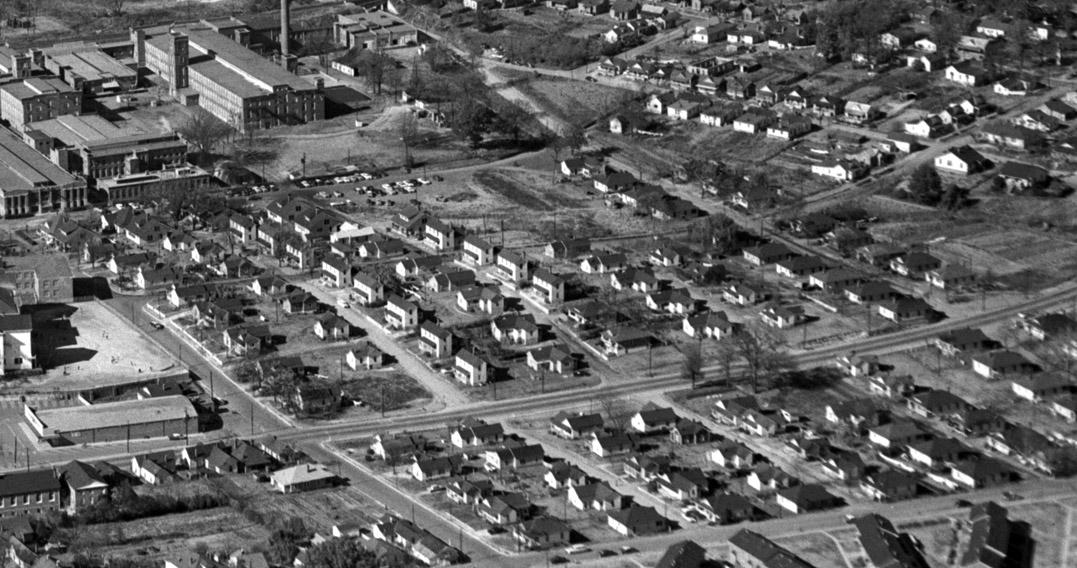

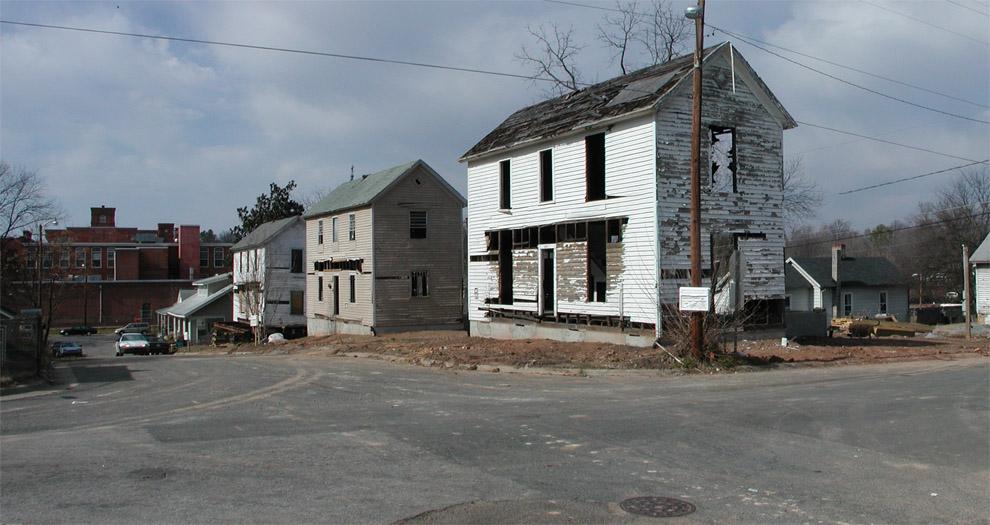
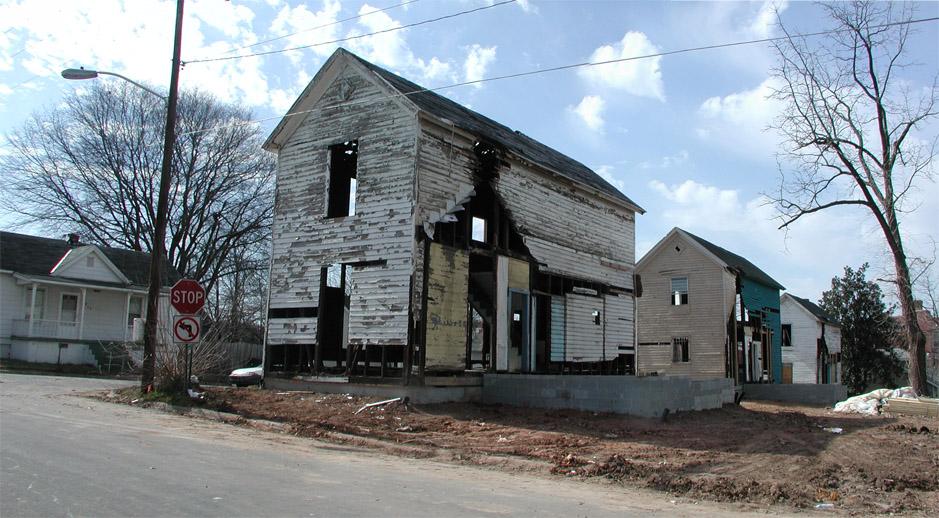
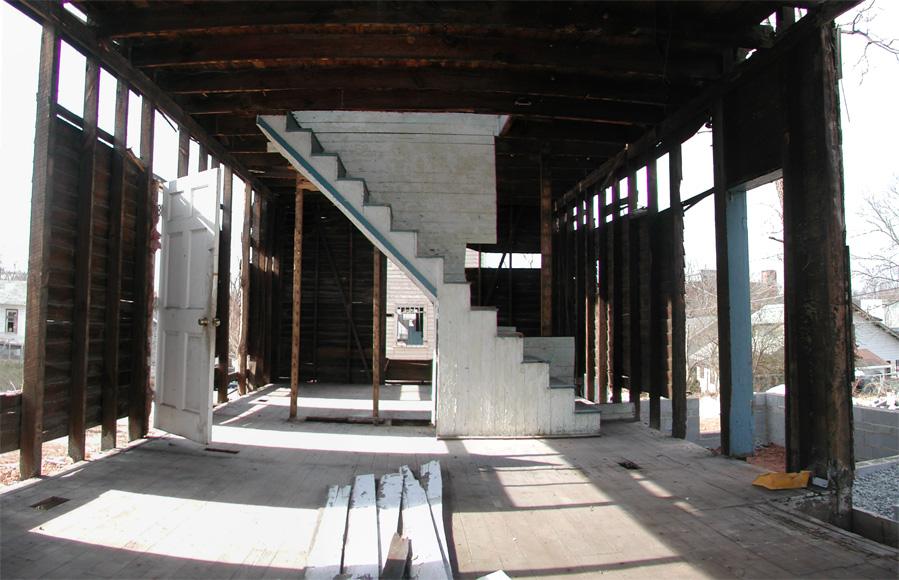
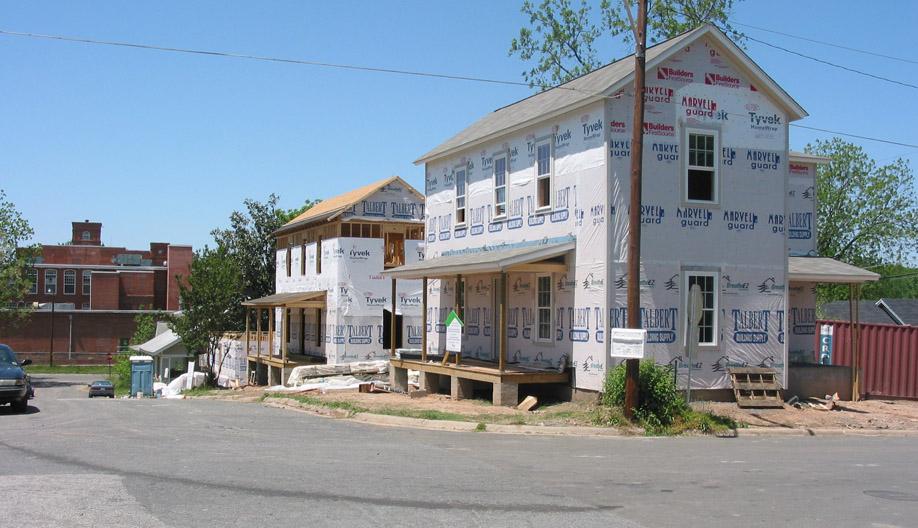

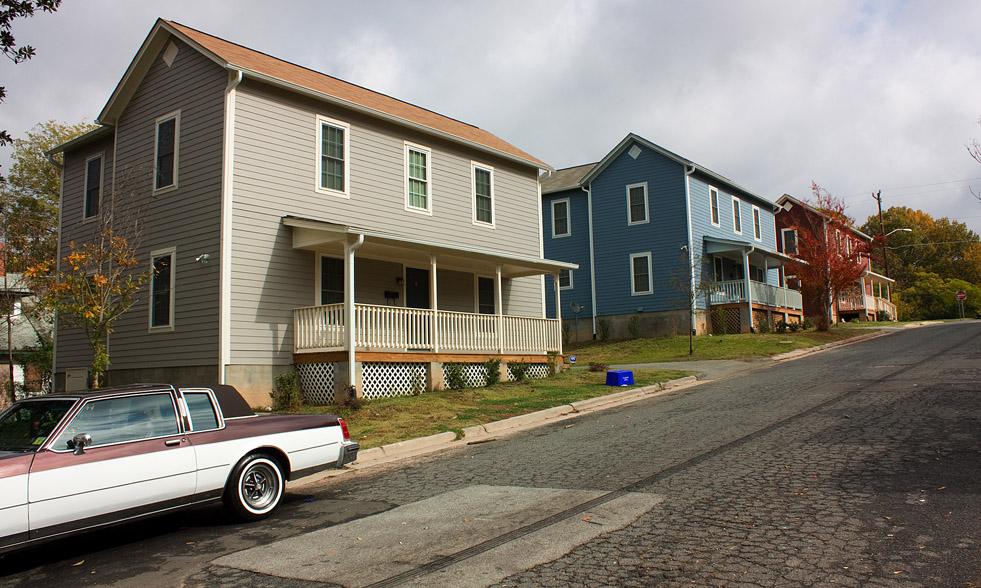
Comments
Submitted by Toby (not verified) on Tue, 1/4/2011 - 12:55am
Nice post! Good to see some "happy news" on ED once in a while.
@Gary: do you have an estimate of the per-square-foot cost differential for the better-quality construction highlighted here -- "Hardiplank vs. vinyl, 1 x 4 casing around the windows with the siding butted to the casing and cornerboards, proportionate window sizes, full size front porches, parged block foundation vs. slab"?
Submitted by Aaron (not verified) on Tue, 1/4/2011 - 2:59am
Great post and commentary, Gary. Well put.
I'm familiar with some 'affordable' housing metrics, which trend into the $60-70/sf range. That's difficult to do (many architects thing $175/sf is a reasonable floor for custom work). These metrics are, in many ways, below a threshold of long-sighted quality goals for home building. We're likely to be knocking these houses down every thirty years, so affordable may prove to be synonomous with disposable.
As for the siding question: It shouldn't be that much more to do hardiplank itself, but the trim and paint will add up to be a significant differentiator (neither are required with vinyl). The affordable home market is so obsessed with cutting costs that Hardieboard is just about never considered. Siding, like so much else, is seen as a commodity. Here's the behavioral thought process: 1) I need siding, and 2) siding is siding. If vinyl is X, and Hardie is twice X = What is there to debate?
Without any incentives or metrics for quality in design. I don't see that logic changing.
my.02
-Aaron
Submitted by Gary (not verified) on Tue, 1/4/2011 - 3:20am
Thanks Toby and Aaron
Toby, I haven't priced vinyl, so I can't tell you how cheaply it can be purchased/installed. I do know that when we built the two new houses we built in this neighborhood with RD Construction, using hardiplank, etc., the cost was ~$80/sf. Aaron, I think your numbers are high, but $80/sf certainly sacrificed higher market interior finishes (stock cabinets, vanities, carpet vs. hardwoods, minimal interior casework, etc.) But we sold both of those houses (at 1101 and 1103 Franklin) priced to be affordable to 80% of area median income. (We took a significant loss, but that's because we had to pay too much for the land.)
My guess is that the difference between vinyl and the exterior finishes I mentioned is on the order of $5/sf. I know Self-Help has started using HP more in recent housing in the West End, and Habitat is using it more often as well. So we're getting there, slowly. Aaron, thanks for bringing up the disposability issue, which I discussed a few weeks ago. It's (obviously) tragic to me to see houses with high-durability historic materials replaced with the lightweight pine, vinyl, composite, etc. that characterizes most new housing - particularly with affordable housing, where you might acquire the housing and it's high durability materials incredibly cheaply.
GK
Submitted by Natalie (not verified) on Tue, 1/4/2011 - 6:38pm
For another comparison, not really knowing what we were doing at the time, our rennovation in which we applied for and received state tax credits came in at $89/sqft. We admittedly overspent on some aspects of our home.
We also left some projects to be completed at a later date which will most likely increase our costs/sqft to ~ $100.
However, with the state tax credits, even at the higher cost/sqft, we're going to come out at about $76/sqft
Add new comment
Log in or register to post comments.